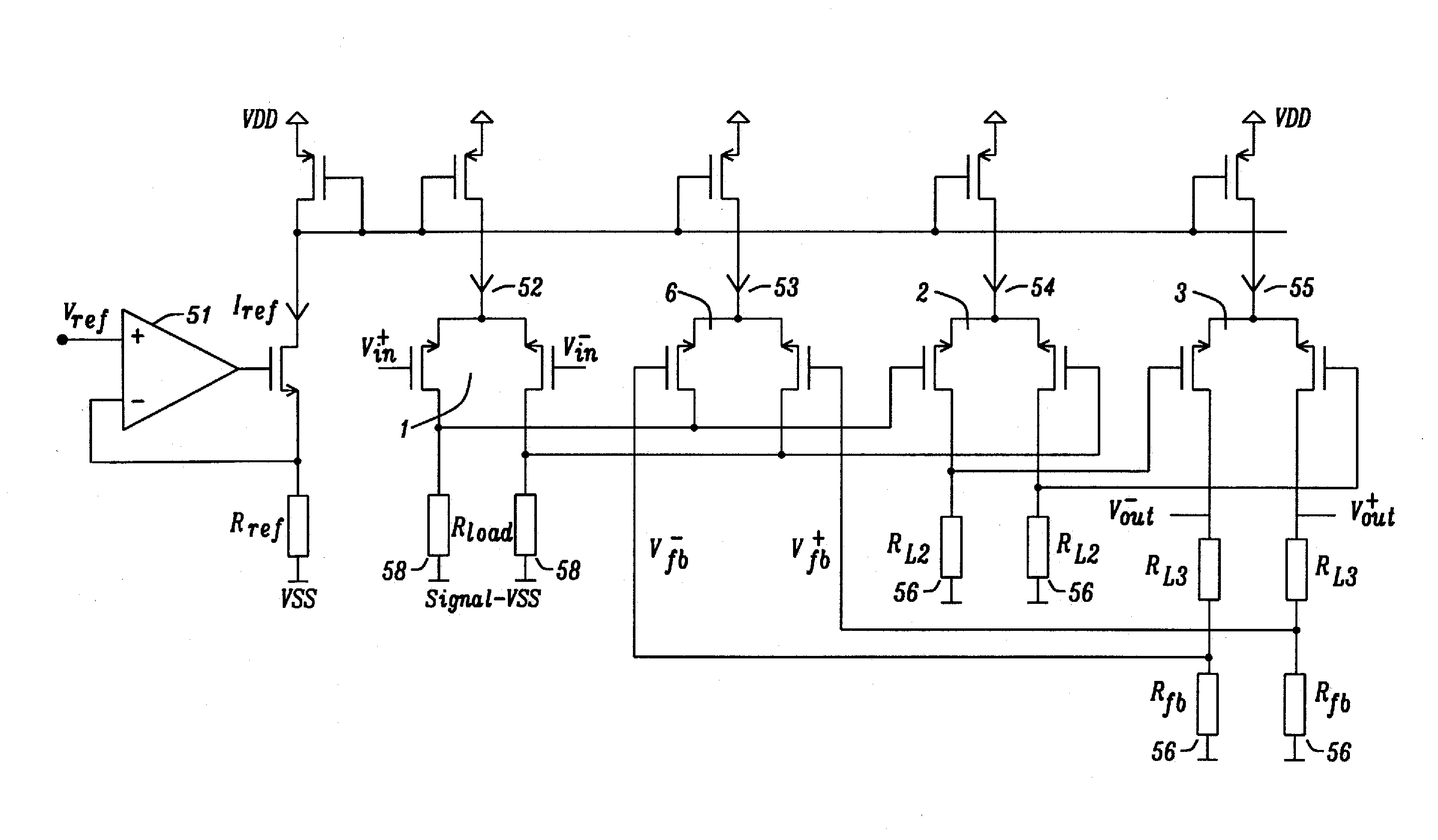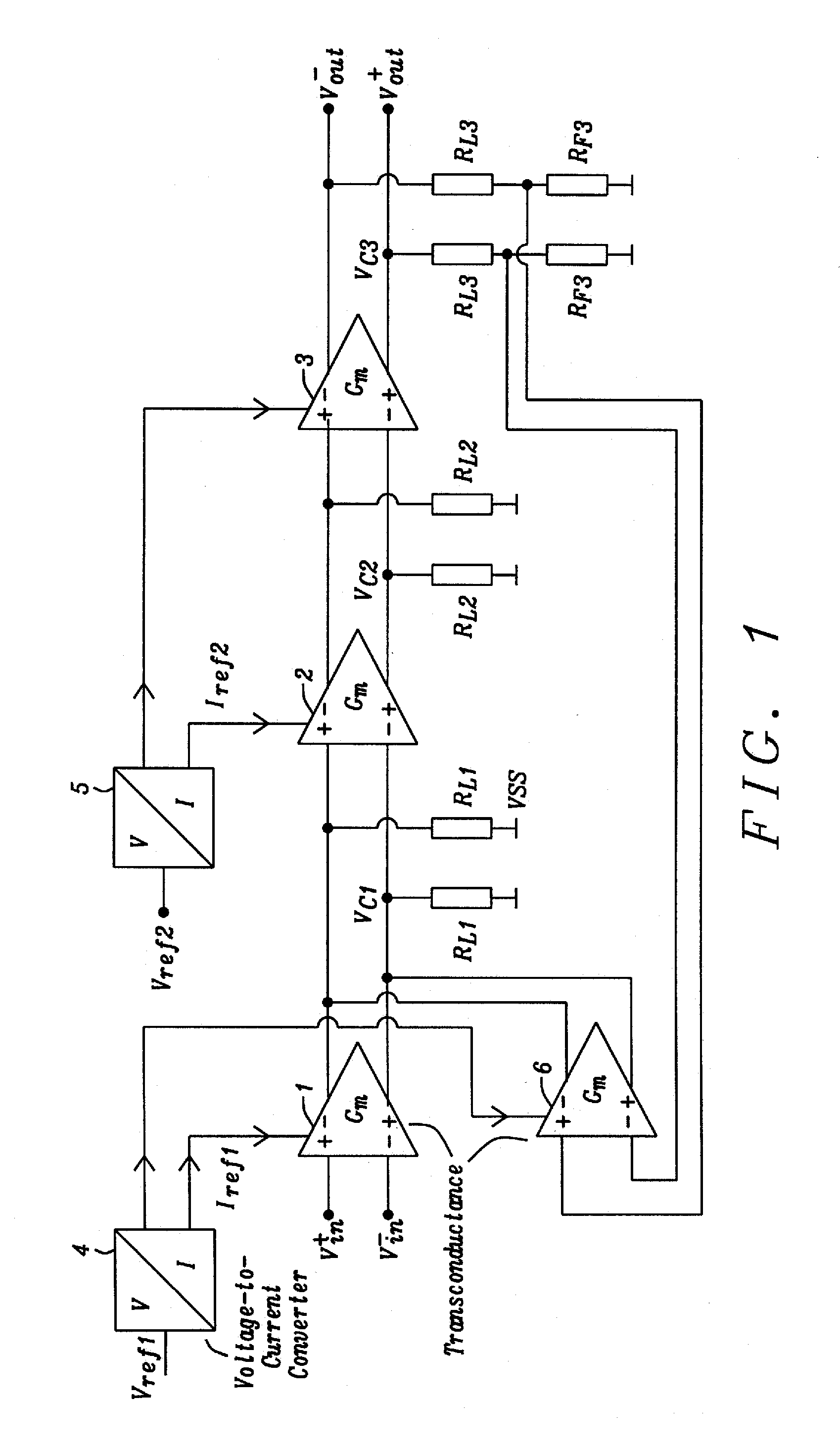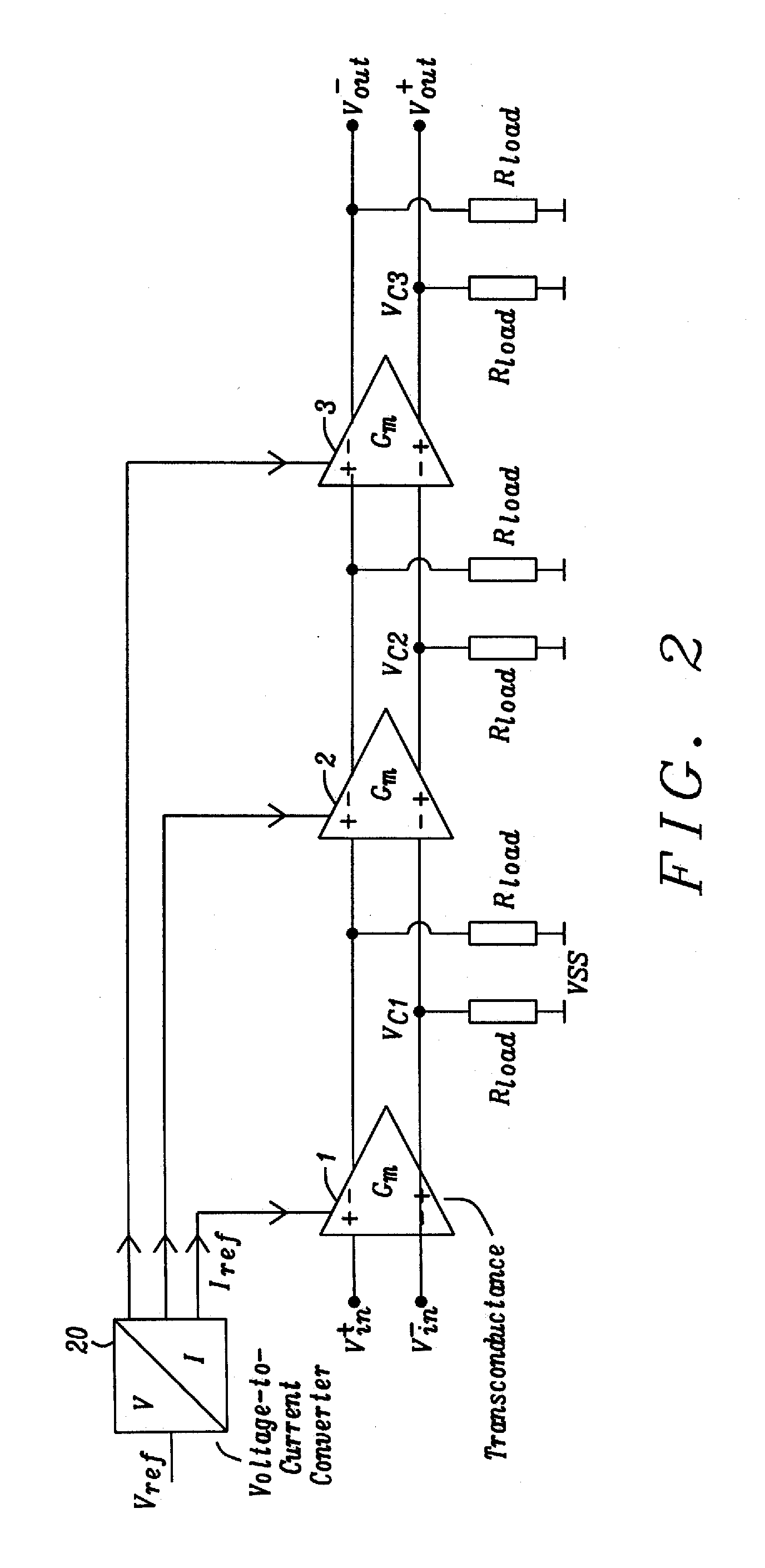Multi-Stage Fully Differential Amplifier with Controlled Common Mode Voltage
a fully differential, amplifier technology, applied in amplifiers, amplifiers with semiconductor devices/discharge tubes, amplifiers, etc., can solve problems such as residual low frequency, low noise, and low gain error of chopper amplifiers, and achieve the effect of reducing nois
- Summary
- Abstract
- Description
- Claims
- Application Information
AI Technical Summary
Benefits of technology
Problems solved by technology
Method used
Image
Examples
Embodiment Construction
[0041]Circuits and methods for achieving a low-noise amplifier, which can be primarily used for amplifying low frequency signals, are disclosed.
[0042]A preferred embodiment of the invention discloses an amplifier amplifying low frequency signals in the range of 0-500 Hz to minimize residual offset, non-linearity and gain errors. A prerequisite is a low transition frequency between 1 / f-noise and white noise. This can be achieved if only PMOS transistors are used in the amplifier circuit, as the PMOS transistors exhibit lower 1 / f-noise than NMOS transistors. In the preferred embodiment of the invention resistors are used as load impedances. Alternatively transistors operating as resistors, inductors, diodes, transistors operating as diodes, or MOS diodes could be used as load impedances. The problem of the low gain bandwidth product is circumvented using more than one gain stage, e.g. three gain stages. Therefore the amplifier disclosed has a very low noise density, namely below 30 nV...
PUM
 Login to View More
Login to View More Abstract
Description
Claims
Application Information
 Login to View More
Login to View More - R&D
- Intellectual Property
- Life Sciences
- Materials
- Tech Scout
- Unparalleled Data Quality
- Higher Quality Content
- 60% Fewer Hallucinations
Browse by: Latest US Patents, China's latest patents, Technical Efficacy Thesaurus, Application Domain, Technology Topic, Popular Technical Reports.
© 2025 PatSnap. All rights reserved.Legal|Privacy policy|Modern Slavery Act Transparency Statement|Sitemap|About US| Contact US: help@patsnap.com



